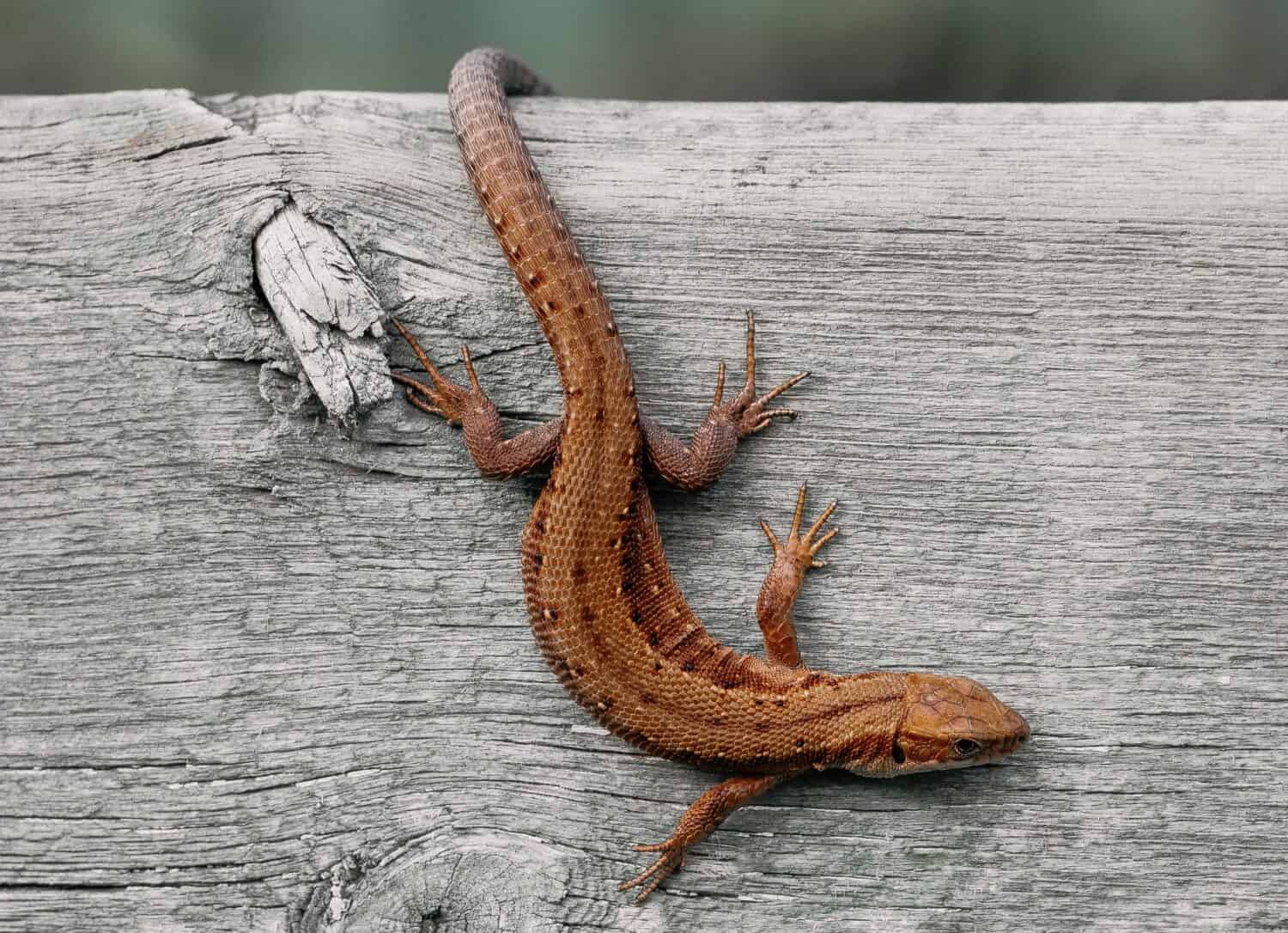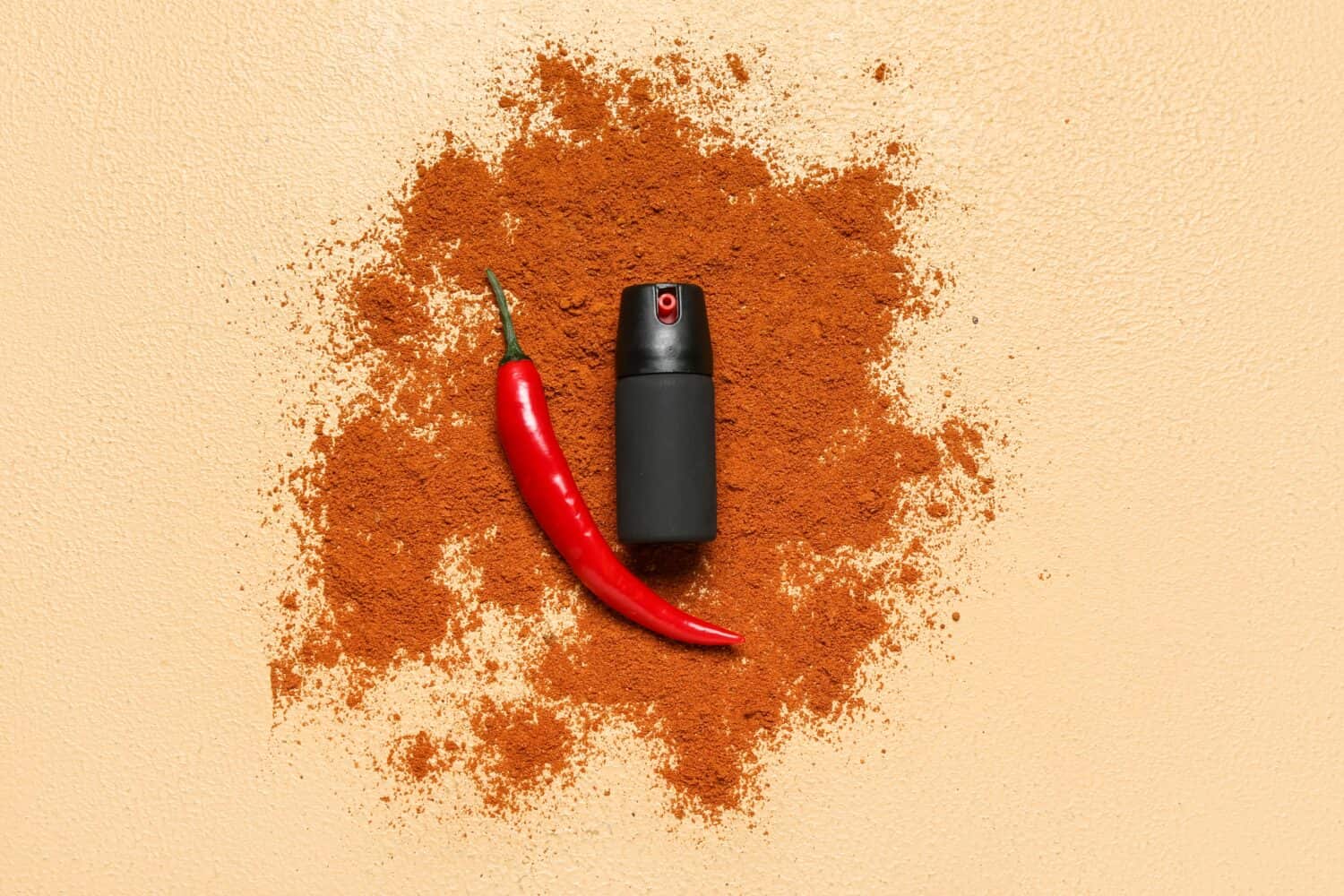Ever spotted animal poop on your property, and you couldn’t tell whether it’s a lizard’s or a snake’s? Most homeowners will concur that they share their property with reptiles that occupy both indoor and outdoor spaces. These creatures hide in dark corners, climb up walls, and even crawl across ceilings. Snakes and lizards also occupy open vents and cracks around houses’ foundations, hunting for their next meals or seeking warm shelter during the cold season.
Because some lizard and snake species are poisonous, you should know which species they are and the necessary protective measures to follow. Identifying them is easy when you understand the animals’ droppings and their distinguishing characteristics. If you don’t, we’ve got you covered.
This article will teach you how to differentiate snake scat from lizard poop, giving you a hint of the reptile living at your place. We’ll also cover other essential topics, including whether the fecal matter is harmful, how to handle it safely, and how to rid your property of these creatures.
Lizard Poop vs. Snake Poop: Three Key Differences
Lizards and snakes are members of the largest order of reptiles, Squamata. Therefore, it’s unsurprising they have a few things in common, including defecating and urinating using one orifice, the cloaca. Even more confusing is that both creatures’ droppings have white deposits (the uric acid crystal). So, how can you tell if the scat around your home is a lizard’s or a snake’s? Watch out for these three main differences.
1. Appearance
Lizard droppings have a signature white cap-like end that is usually relatively dry and firmly attached. The deposit is only a small chunk of the entire scat, making the dropping look like an elongated black pellet with a whitish ball. Because these fairly small reptiles often feed on plants, you might see green coloring on their scat.
Contrarily, the chalk-like urea cap in a snake’s fecal matter is typically larger and looser. Sometimes, the scat may be brown, with the white parts looking like streaks along the long deposits. Snake droppings often have their prey’s indigestible remains, such as fur, bones, and feathers.
2. Texture
Lizard droppings are mostly solid, with a dry, crumbly texture. Depending on the animal’s diet and health, they might also be liquid. For example, lizards with stress and bacterial and parasitic infections may have diarrhea, making their scat watery.
On the other hand, snake droppings are more liquid than solid, much like bird fecal matter — this is because they have plenty of time to digest and regurgitate their meals, producing an abnormal amount of mucous. Plus, their carnivorous diets don’t offer a lot of fiber. However, like lizards, snake scat may also be excessively watery if the animals have diarrhea.

Lizard poop is solid, with a crumbly texture.
©Repli-Kate/Shutterstock.com
3. Length
Most lizard droppings are between 2 and 5 mm long, depending on the animal’s diet and size. However, snake scat is usually longer, often measuring 50-177 mm, based on the species and the reptiles’ prey. Some smaller snakes’ droppings are only about 13 mm long.
Are Snake and Lizard Poop Poisonous?
Although snake and lizard droppings smell unpleasant, they lack venom. But the scat can poison you if you handle it improperly such as touching it with your free hands. Because it contains the harmful bacterium salmonella, it can cause various health complications by affecting your joints, bones, blood, and nervous system.
If you catch a salmonella infection following direct contact with a lizard or snake poop, you’ll likely experience some of these symptoms:
- Headache
- Nausea and vomiting
- Chills
- Abdominal cramps
- Fever
- Bloody stool
- Diarrhea
Salmonella symptoms usually manifest between 6 hours and six days after infection and may last up to a week. Most people confuse the illness with stomach flu, so it’s best to see a doctor to confirm whether you have it. The healthcare provider will test your stool or blood to do that. If you have the disease, they will likely prescribe antibiotics like ciprofloxacin, azithromycin, and ceftriaxone.
Disposing of Lizard and Snake Poop
We recommend wearing plastic gloves and air masks to remove snake or lizard droppings from your space. Here are the steps to follow:
- Use a small shovel or spoon to scoop up the scat.
- Put it in a tiny plastic bag and seal it at the top.
- Throw it in your trash can.
If the lizard or snake scat is on a piece of cloth, also wear protective gear to remove it. Be sure to use water and white vinegar to wash off any stains on the fabric.
It’s common for some homeowners to seek assistance from wildlife control professionals to get rid of lizard and snake scat. Doing so will help you avoid contracting illnesses like salmonella infection.
How to Remove Lizards and Snakes from Your Property
Removing the lizards or snakes in your house and yard should be your next move after disposing of their poop. That way, you won’t have to worry about dirtying your space again and threatening your health. Plus, it keeps your household safe from the diseases these reptiles carry.
Let’s look into the best methods to chase these lizards and snakes and ensure they don’t inhabit your space again.
5 Reliable Ways to Get Rid of Lizards
1. Use Pepper Spray
Pepper spray is the world’s most used non-lethal form of self-defense. Interestingly, it can also be extremely handy when you must chase away lizards without killing them. Even more ideal, you can make this inflammatory agent at home instead of buying it from a nearby store.
Follow these steps to make your pepper spray solution and use it to repel lizards:
- Add a few tablespoons of pepper powder to about half a liter of water.
- Shake the mixture well.
- Spray the solution in the corners of your house and along entryways like windows.
Lizards are allergic to pepper because it irritates them. Effective alternatives to make your solution include hot sauce and red chili powder, which also drive off the reptile.

Pepper spray is the world’s most used non-lethal form of self-defense and can be used as a lizard deterrent.
©Pixel-Shot/Shutterstock.com
2. Place Peacock Feathers Around Your House
This is arguably the easiest way to force lizards out of your home. So, peacock feathers are not exactly lizard repellents. But the reptiles recognize the birds as predators. Therefore, seeing their feathers terrifies and deters them from inhabiting your space.
Consider hanging peacock feathers in one or more corners of your house. Alternatively, put them in a vase, and place it near a window where lizards will likely pass. Besides conveniently keeping the reptiles at bay, the train will take your space’s aesthetic appeal up a notch.
3. Use Naphthalene Balls
Placing mothballs in the corners of your home, drawers, and cabinets can also solve your lizard problem quickly. The reptiles can’t stand their strong odor, prompting them to stay away. Moreover, the products will repel other insects, including moths.
However, we don’t recommend using naphthalene balls for lizard removal if you have young children. Exposure to the chemicals forces their blood cells to break up, increasing their chances of getting hemolytic anemia. Pets will likely suffer the same fate, leading to seizures and lethargy.

Naphthalene mothballs’ strong odor is an effective, all-natural way of keeping lizards away.
©Bowonpat Sakaew/Shutterstock.com
4. Cool Down Your Room
Lizards are cold-blooded creatures that prefer warm environments. That’s why reducing your room temperature keeps them away from your house. Unfortunately, for this strategy to work, you must do more than open your windows—leverage an air conditioner or cooler.
5. Use Garlic and Onions
Lizards dislike garlic and onions’ sharp odor. If you place a few slices of these vegetables in different parts of your home, such as around your kitchen, the reptiles will likely never revisit the areas. Staying in a room with pieces of onions and garlic might seem unsanitary. If you don’t take to leaving the small chunks around, mix them with water to make a lizard repellent and spray it all over your house.

Garlic is a natural and effective way to keep your home lizard free.
©Marian Weyo/Shutterstock.com
Tips to Keep Snakes at Bay
Get Rid of Common Snake Hiding Places
If you see snake droppings in your space, the animal’s hiding places are likely nearby. These reptiles fancy dark dump areas where they can hide, relax and breed. Popular hiding spots include under a pile of firewood, long lawn grass or thick flower garden outside, and holes and crevices around your house.
You might not find snakes in their hiding spots during your inspection. But that doesn’t mean the reptiles are not around, so take the necessary steps to eliminate their shelters. Consider the following:
- Seal all holes and cracks around your house’s exterior.
- Mow your lawn.
- Replace the damaged screens on your doors and windows.
- Eliminate rock piles on your property.
- Store firewood in sealable wood boxes.
Albeit tiresome, eliminating snake hiding places is a sure way to drive away the reptiles.
Use Snake Repellents
Investing in quality repellents is another strategy to avoid sharing your home with snakes. Most of these products are safe and effective for all snake species. They work by throwing off the reptiles’ sense of smell and preventing them from nesting in your home. Some popular natural snake repellents include ammonia, garlic and onions, clove, vinegar, and sulfur.
Furthermore, you can use plants like hot pepper to create snake-repellent solutions and pour them around your home’s perimeter to keep them out.
Eliminate Food Sources
A snake’s diet comprises rodents, birds, and slugs. If you have them on your property, they’ll keep returning to enjoy them. Thus, do away with these food sources to compel the animals to move out in search of prey.
Keep in mind that each of these animals will require a unique elimination method. For example, combining slug bait and salt is a quick plan to eliminate these soft-bodied mollusks. Conversely, removing rodents like mice will call for other tactics, like using mouse repellents and getting a cat to eat, and reducing their populations.
If you continue finding snake and lizard poop in your home despite using these methods, don’t hesitate to ask for help from a local wildlife control company. Aside from removing the fecal matter and the animals, they can also recommend other strategies to force out the reptiles.
Handling Snakes and Lizards on Your Property
Now that you know the distinguishing characteristics of lizard and snake droppings, determining the species invading your space should be a breeze. Removing these reptiles is smart because it protects you against infections and keeps your pets safe since some snakes can prey on them. Besides, it’s much easier to maintain hygiene without these animals considering they poop every 1-3 days.
But remember, snakes and lizards are valuable members of the ecosystem. Instead of killing them, leverage effective methods to drive them away from your property. Doing so will enable them to carry out their significant role of controlling pest and insect populations.
At the same time, if snakes and lizards fascinate you, keeping them as pets is not such a crazy idea. Ensure you choose harmless species, like rosy boas, ball pythons, bearded dragons, and geckos. Enlightening yourself about what it takes to care for these reptiles effectively is essential for owners with little experience.
The photo featured at the top of this post is © Creeping Things/Shutterstock.com
Thank you for reading! Have some feedback for us? Contact the AZ Animals editorial team.







